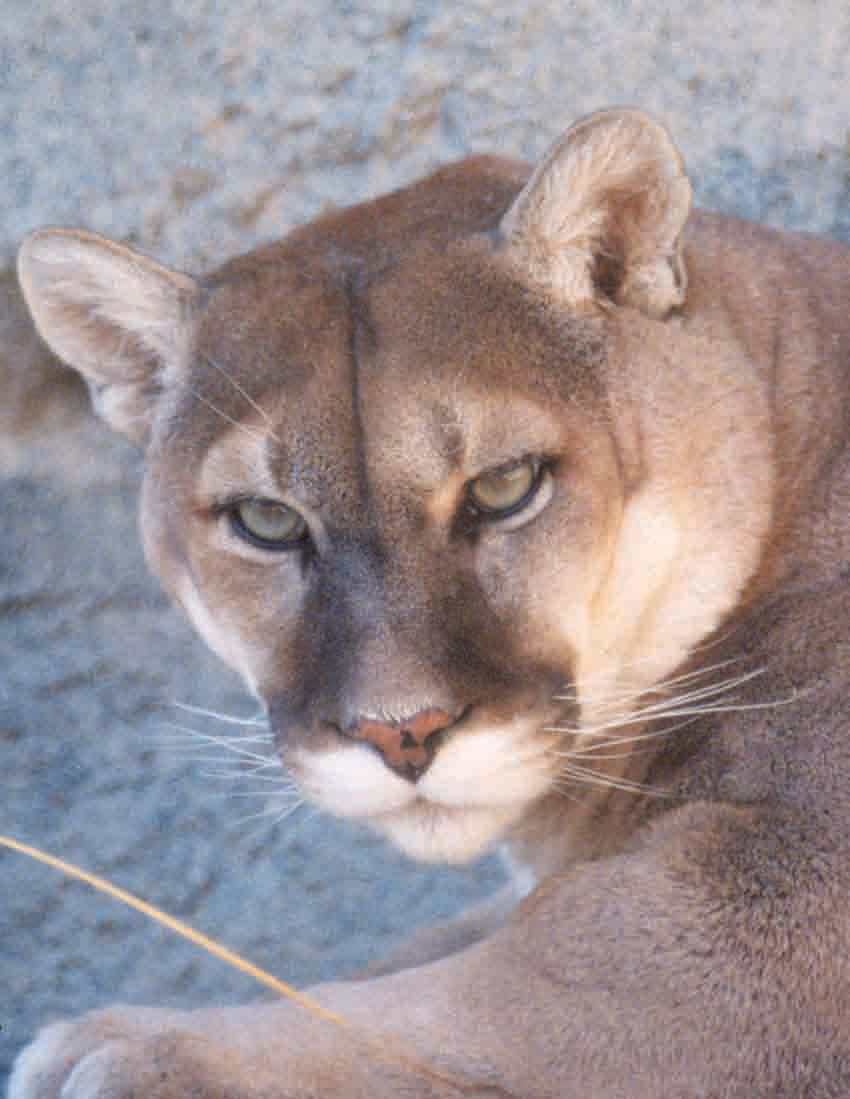Cougar
 Cougars are known by many names, including puma, mountain lion and panther. Although the scientific name, Puma concolor, means ‘cat of one color,’ the dominant tan or light-cinnamon color of the cougar is contrasted by its white chest and underside. Black appears on the muzzle, backs of the ears and the tip of the tail.
Cougars are known by many names, including puma, mountain lion and panther. Although the scientific name, Puma concolor, means ‘cat of one color,’ the dominant tan or light-cinnamon color of the cougar is contrasted by its white chest and underside. Black appears on the muzzle, backs of the ears and the tip of the tail.
Size and weight of cougars vary. Adult males are larger—often measuring up to eight feet in length and weighing 150–200 pounds. Adult females usually measure up to seven feet in length and average 90–110 pounds.
Cougars are easily distinguished from bobcats (except when kittens). Cougars are much larger than bobcats, and have long tails that measure approximately one-third of the overall body length.
For in depth hunting and license information, reference the NM Hunting Rules & Info.
Cougar ID Course (via the NMDGF Online Licensing System)
Harvest & Statistic Updates
Check for Cougar Zone Closures Here
Toll-free Harvest Hotline (877) 950-5466
Harvest and depredation reports update frequently. To refresh this page in most browsers (you browser may vary) hold down the Control key and press F5.
Cougar Publications
Mountain Lion Management in Desert Bighorn Ranges
Mountain lion removal in desert bighorn sheep ranges by contracted trappers and hunters is part of the statewide mountain lion management program. Population estimates for each mountain lion management zone are determined based on available habitat, prey abundance, and other ecological factors. The maximum sustainable number of mountain lions that can be removed in one year is based on historic removal numbers and management objectives. This number incorporates removal from all sources, including hunter harvest, removal from bighorn sheep habitat, depredation, roadkill, etc. Therefore, mountain lion removal from desert bighorn sheep ranges is considered in the total sustainable number removed from the mountain lion management zone, and will not result in a decreasing mountain lion population statewide. Click here for more details about the sustainable harvest levels.
